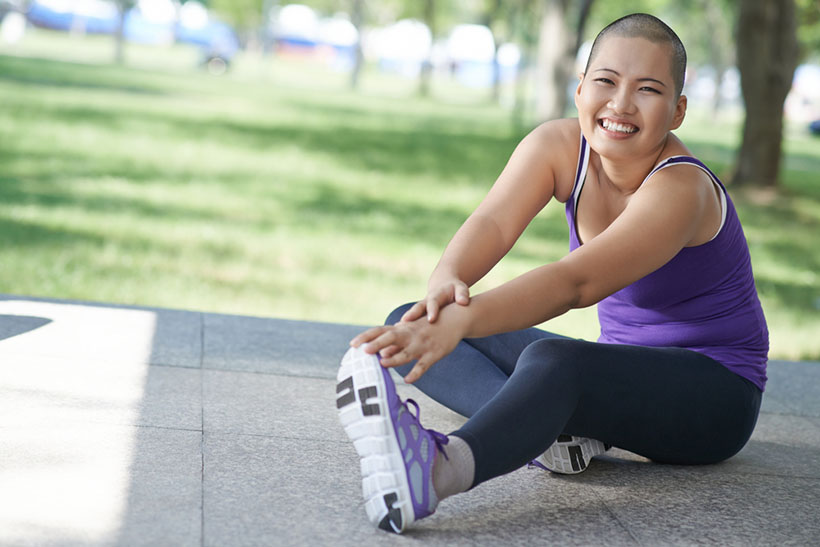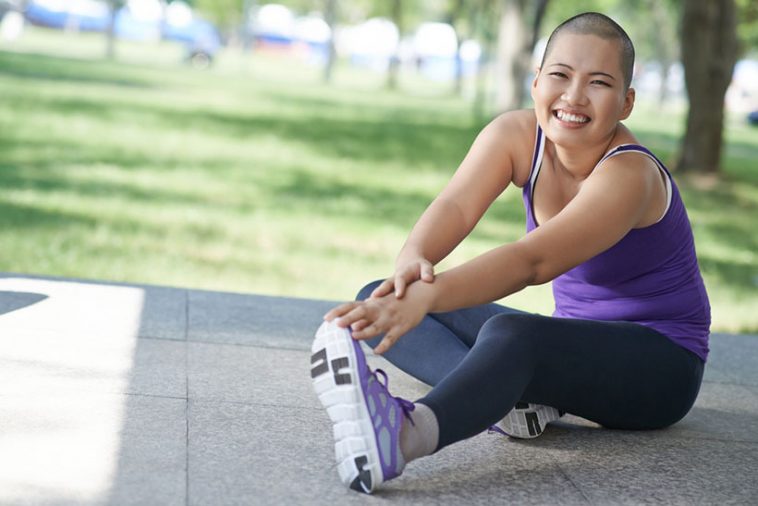- Like
- SHARE
- Digg
- Del
- Tumblr
- VKontakte
- Flattr
- Buffer
- Love This
- Save
- Odnoklassniki
- Meneame
- Blogger
- Amazon
- Yahoo Mail
- Gmail
- AOL
- Newsvine
- HackerNews
- Evernote
- MySpace
- Mail.ru
- Viadeo
- Line
- Comments
- Yummly
- SMS
- Viber
- Telegram
- JOIN
- Skype
- Facebook Messenger
- Kakao
- LiveJournal
- Yammer
- Edgar
- Fintel
- Mix
- Instapaper
- Copy Link
Introduction
 Cancer is one of the scariest diseases that we currently face.
Cancer is one of the scariest diseases that we currently face.
Not only is it often terminal, but it can be incredibly debilitating, leaving people tired and drained for months before they can get better.
This is partly due to the treatments that we have to employ to try and combat the disease.
Cancer treatments vary greatly depending on what type of cancer is being targeted and where it is located in the body – yet, many of the necessary treatments can have a major impact on the body.
Included in these side effects are fatigue, loss of hair, nausea and loss of muscles mass – partly because a lot of time as a cancer patient is spent in bed.
Due to this, patients who successfully beat cancer and leave treatment can find themselves significantly weaker than when they first went in, leaving them with the desire to strengthen their body and get back to the fitness they were used to.
To achieve these goals, exercise is required, though the type of exercise makes a huge difference in how effective it will be.
In this analysis, we will explore which exercises are best suited to rehabilitating cancer patients as well as why they are so important and what the goal of these activities is.
What is the Goal of Rehabilitative Exercises?
Rehabilitation, by definition, is about restoring oneself back to normality. That means reaching the physical strength held before treatment began, which can vary from person-to-person. This is being highlighted because, much like any fitness goal, every individual has a different objective when it comes to rehabilitation. Individuals who were already at peak physical condition when they went into treatment may have lost a little muscle mass but could be generally okay enough to still walk around and complete daily activities. On the flip side, individuals who were already weak may have become extremely frail and struggle to complete basic tasks.
Considering this, it’s important for rehabilitation to be given a distinct set of goals, as this is what progress can be measured against. In general, these exercises should be used to develop strength, fitness and stamina by improving muscle mass; however, some may want to return to bodybuilding or an intense fitness regime. For these individuals, their goals could be more about shedding fat gained whilst in hospital and replacing it with toned muscle.
Having a goal like this in mind is a fundamental first step for any exercise-driven rehabilitation process that a cancer patient is starting post-treatment.
What Are the Other Benefits of Rehabilitation Exercises?
Alongside developing physical strength, there is another major advantage and goal of exercise-based rehabilitation – its impact on mental health. Cancer is both physically and emotionally taxing, both on the patient and their family and loved ones. Everyone involved is likely to feel drained from the experience and it’s common for patients to be happy about their success, but also sad about how their body or life has changed as a result.
For many years, exercise has been known to have a positive effect on mental health. Not only does getting fit and doing physical activity release endorphins, therefore boosting an individual’s mood and attitude, but it also impacts confidence. Feeling happy in your own body is a key part of rehabilitation and returning to normal life as, without that self-confidence, individuals can be held back from entering the same social situations that they would previously.
Whilst exercises are fundamental for regaining physical strength, it’s always important to remember the mental impact of this type of rehabilitation, too.
Why Is Knowing This Information Important?
There were 17 million cases of cancer recorded worldwide in 2018. All of these will have been referred to specialist cancer facilities or departments, yet, particularly in the wake of the coronavirus pandemic, these numbers have started slipping. With fewer referrals, more people will be left at home without the knowledge that they have cancer, resulting in a more difficult path to recovery once they are diagnosed.
These late diagnoses will lead to people required more intensive treatments which leave them even weaker and requiring longer, more effective rehabilitation solutions to return to normality. With this in mind, it has become important now more than ever, for people to take their rehabilitation and fitness into their own hands.
With this said, we can now move onto exploring which exercises are genuinely the most effective and commonly recommended for patients leaving cancer treatment. Using this information, all manner of patients can align their exercises and fitness regime with their goals, bring self-confidence and strength back into their lives post-treatment.
Five Exercises to Help Rehabilitate Cancer Patients
The following five exercises are far from the only exercise solutions that cancer patients may want to explore. As mentioned previously, rehabilitation is about returning to normality and every individual has a different definition of what is ‘normal’ for their body and mind. Use these suggestions as a baseline to work from and then adapt as you go, creating a bespoke exercise regime that targets the areas of growth you seek to prioritize.
Walking and Jogging
Particularly at the beginning of the rehabilitation journey, high-intensity exercise might actually do more harm than good. It’s easy for those who are used to exercising regularly and had a very strong body before treatment to try and dive straight into the workouts they were doing before. This is a mistake. Pushing the body too far immediately after treatment leaves a greater risk of injury and a return to being bed-ridden, which only increases the rehabilitation time required to get back to normality.
Instead, it’s sensible to stick to simple, low impact fitness regimes which help bring the body back to a basic level of fitness before developing upon this further. Walking and jogging are excellent starting activities. Walking can be as simple as walking around the house for those who have left treatment and are particularly weak, whilst jogging may be better suited for those who still have a level of fitness and want to build upon it. Long walks are also a great way of leaving the house and engaging with others, which can boost mental health drastically and create an invaluable can-do attitude.
Stretches
Alongside muscle strength and general stamina, flexibility is also a key physical trait lost after being bed-ridden for months. Flexibility is particularly important for the other elements of the rehabilitation journey as it enables individuals to exercise more intensely without risking injury or muscle damage.
Considering this, stretches are another essential aspect of any post-treatment exercises. Whilst we usually consider stretches a pre-workout activity; when it comes to rehabilitation, they can be used as an exercise of their own. Any standard stretches from touching the ground to more complex exercises like yoga can be helpful, simply do them regularly and in moderation and flexibility will be increased massively.
Swimming
Swimming is one of the most effective yet underutilised forms of exercise. Swimming can be incorporated into almost all regular fitness goals and regimes but comes into its own in rehabilitation situations. The act of swimming tests a whole host of different muscle groups simultaneously, burning energy and developing muscle at the same time. Furthermore, as it takes place inside the cushion of water, swimming is extremely low impact, therefore protecting joints and other weakened areas of the body from being at risk of damage like they might be with jogging or running.
The key factor to consider when it comes to swimming is to do-so sensibly. Rehabilitative swimming should take place in shallow pools with another individual there to help to begin with, as many patients might overestimate their ability and find themselves struggling during the first few sessions.
Weightlifting
Lifting weights in all manners is an essential step to extensive muscle development and growth. Particularly for the arms and legs, weightlifting assists in pure bulking, pushing muscles to their limit and then leaving room for them to grow and develop further after use. Generally, all regular weightlifting rules should be followed during rehabilitative exercises with a few others added for additional safety and opportunity.
In particular, the most important thing to consider is that almost all items can be considered a weight. Patients looking to develop their strength don’t need professional weights offered in a gym; in fact, sometimes these can be too heavy. All they really need is a sack of sugar, carton of milk or whatever they can handle in the home. This is key for helping those who might feel embarrassed at their weakness in a gym setting or simply don’t feel like going out in public due to confidence concerns.
Taking the Stairs (Inclined Walking)
Finally, more of a tip than a specific exercise but another suggestion is to take the stairs wherever possible. Inclined walking is one of the most valuable methods of passive exercise, challenging muscles that don’t regularly see a lot of work. This can boost balance and strength all at once, offering greater confidence and allowing patients to explore more intense exercises as they become stronger.
Conclusion
Utilizing these strategies, all manner of different patients who have got through cancer should feel confident and comfortable enough to take their physical development into their own hands.
Always remember, starting slow and building up is the most important part of any rehabilitative program. Set a goal, begin simple and work from there to succeed.
About Shannon Clark
Shannon holds a degree in Exercise Science and is a certified personal trainer and fitness writer with over 10 years of industry experience.

